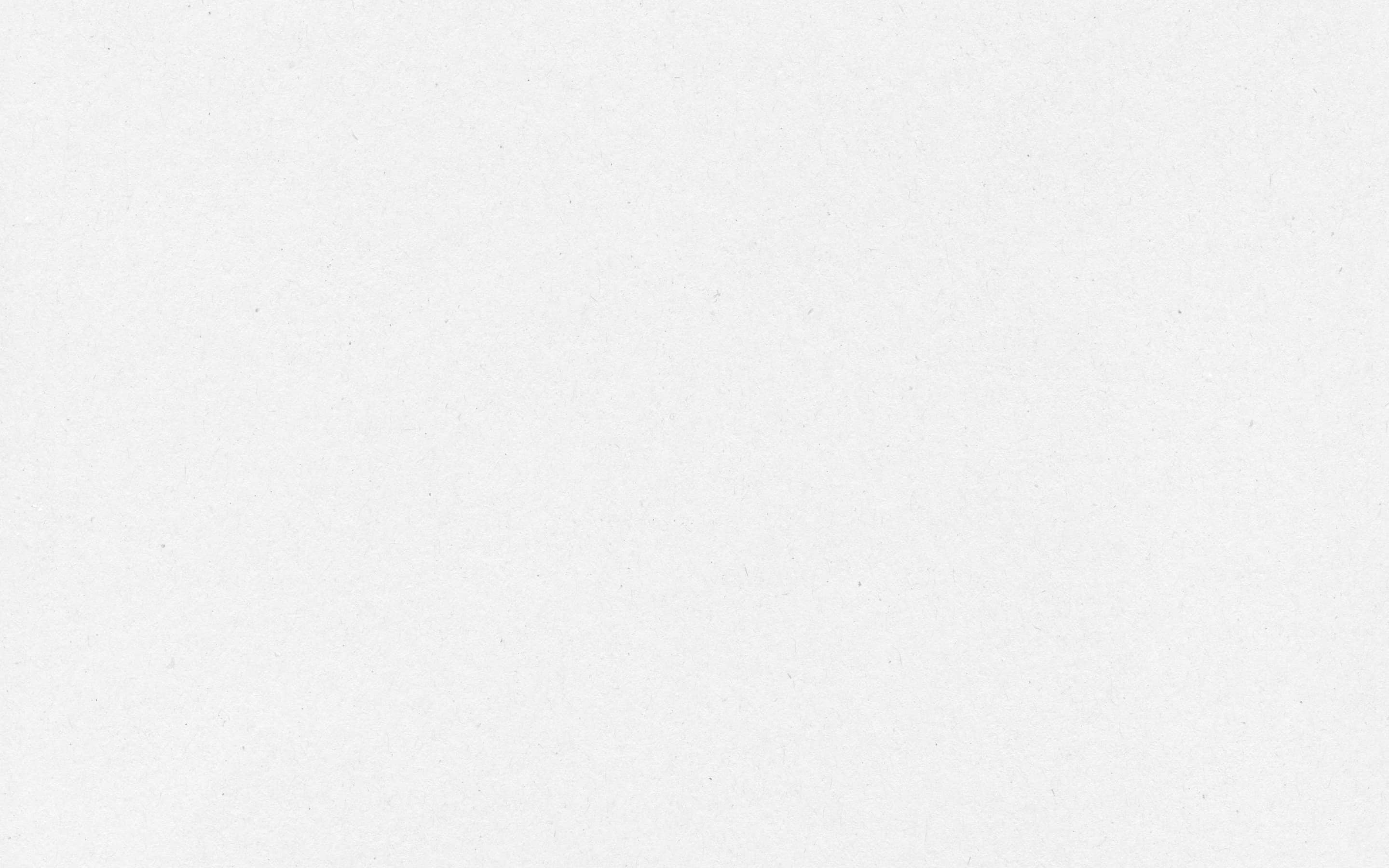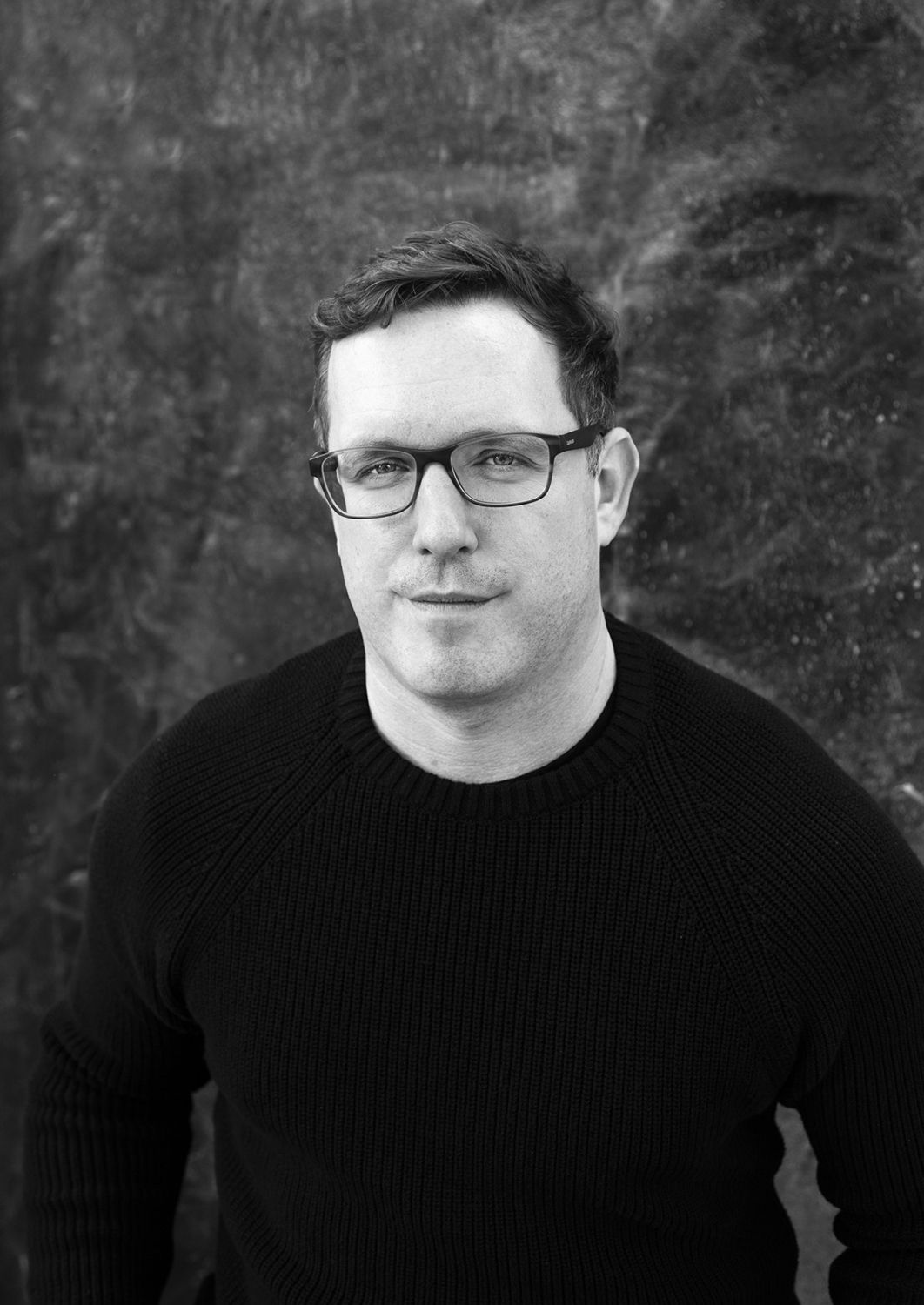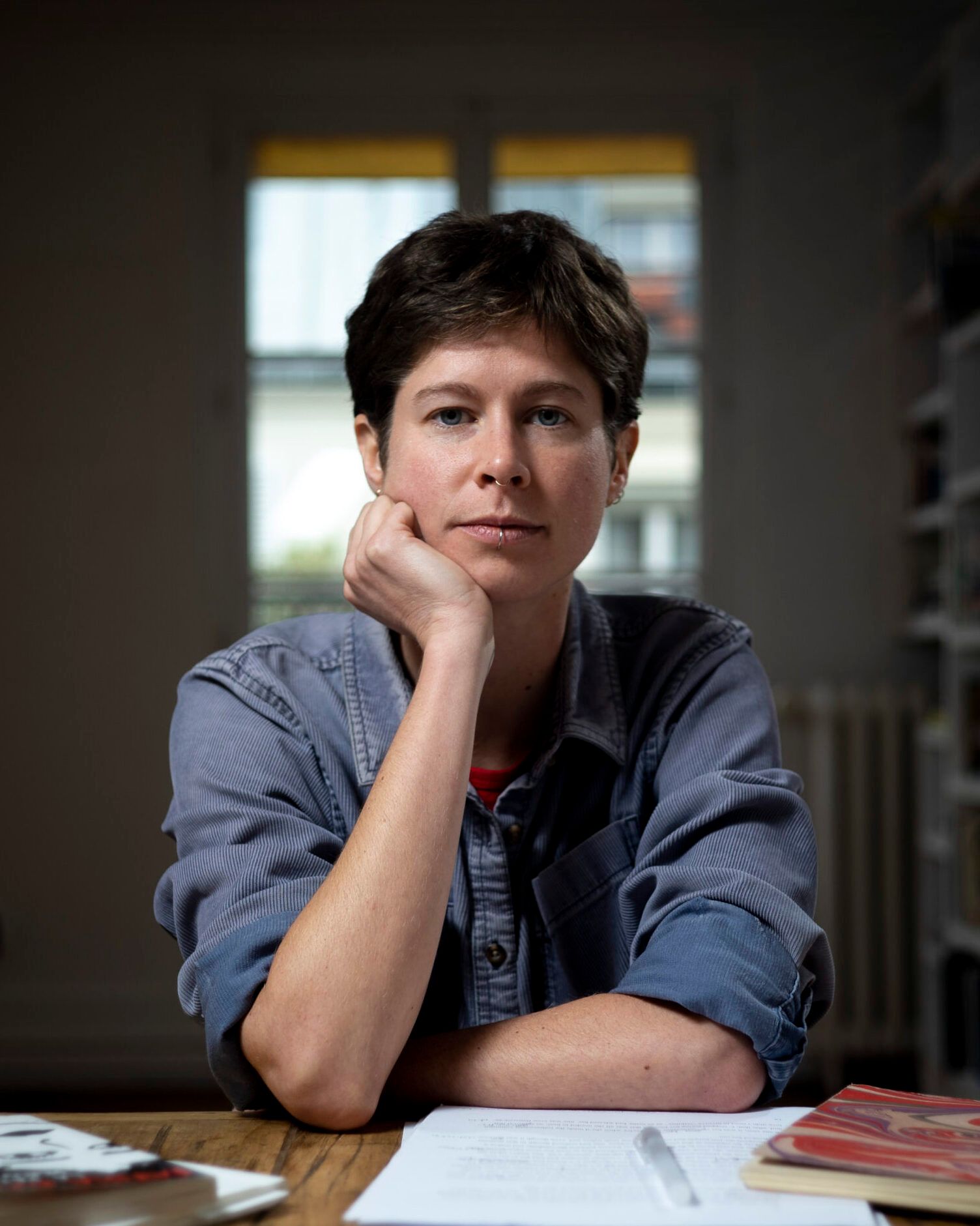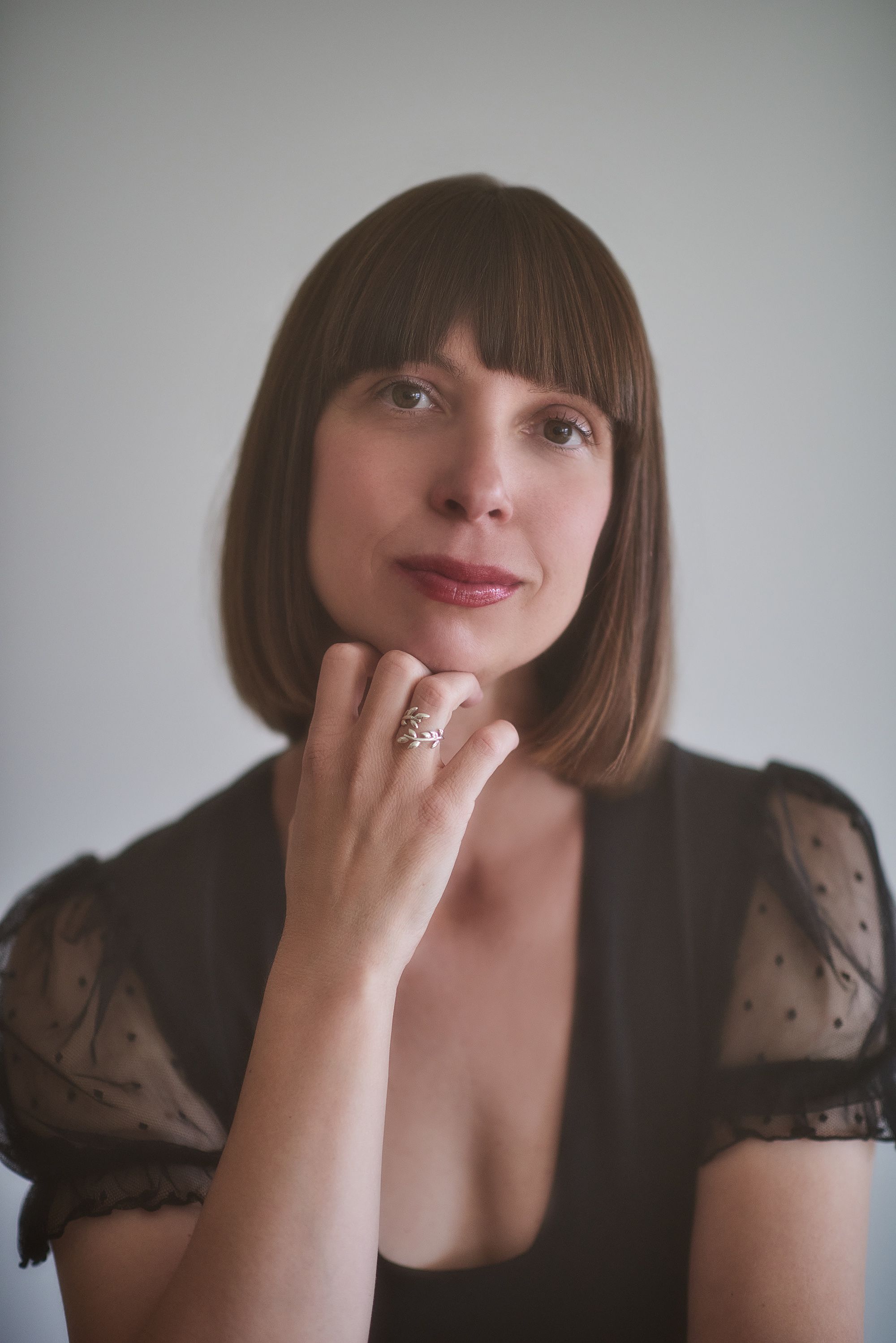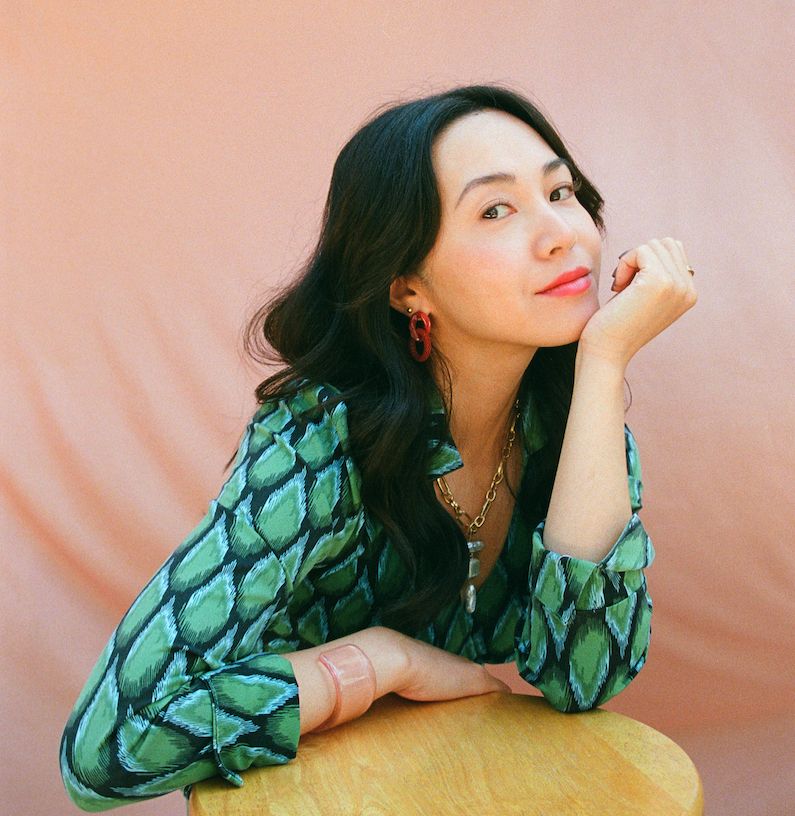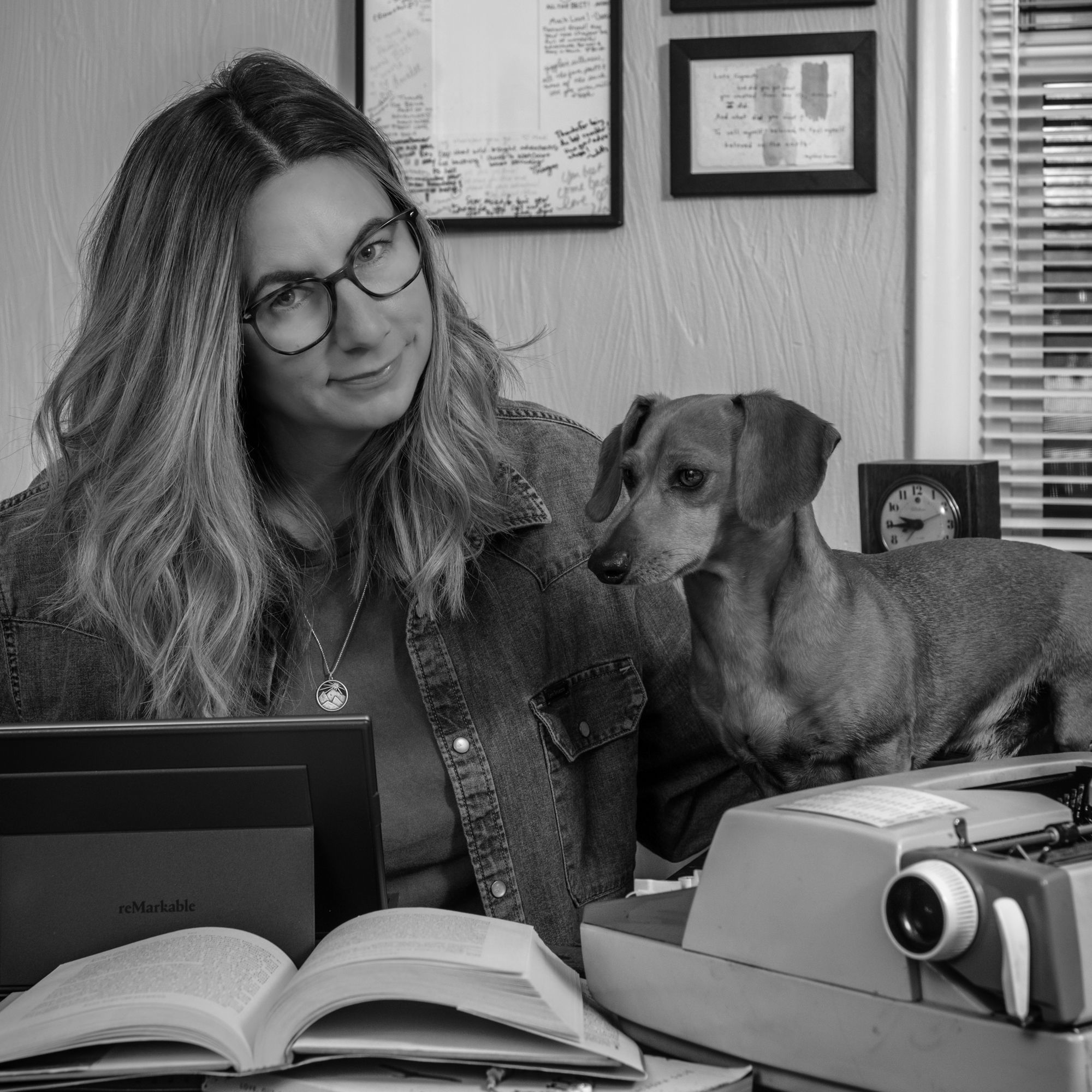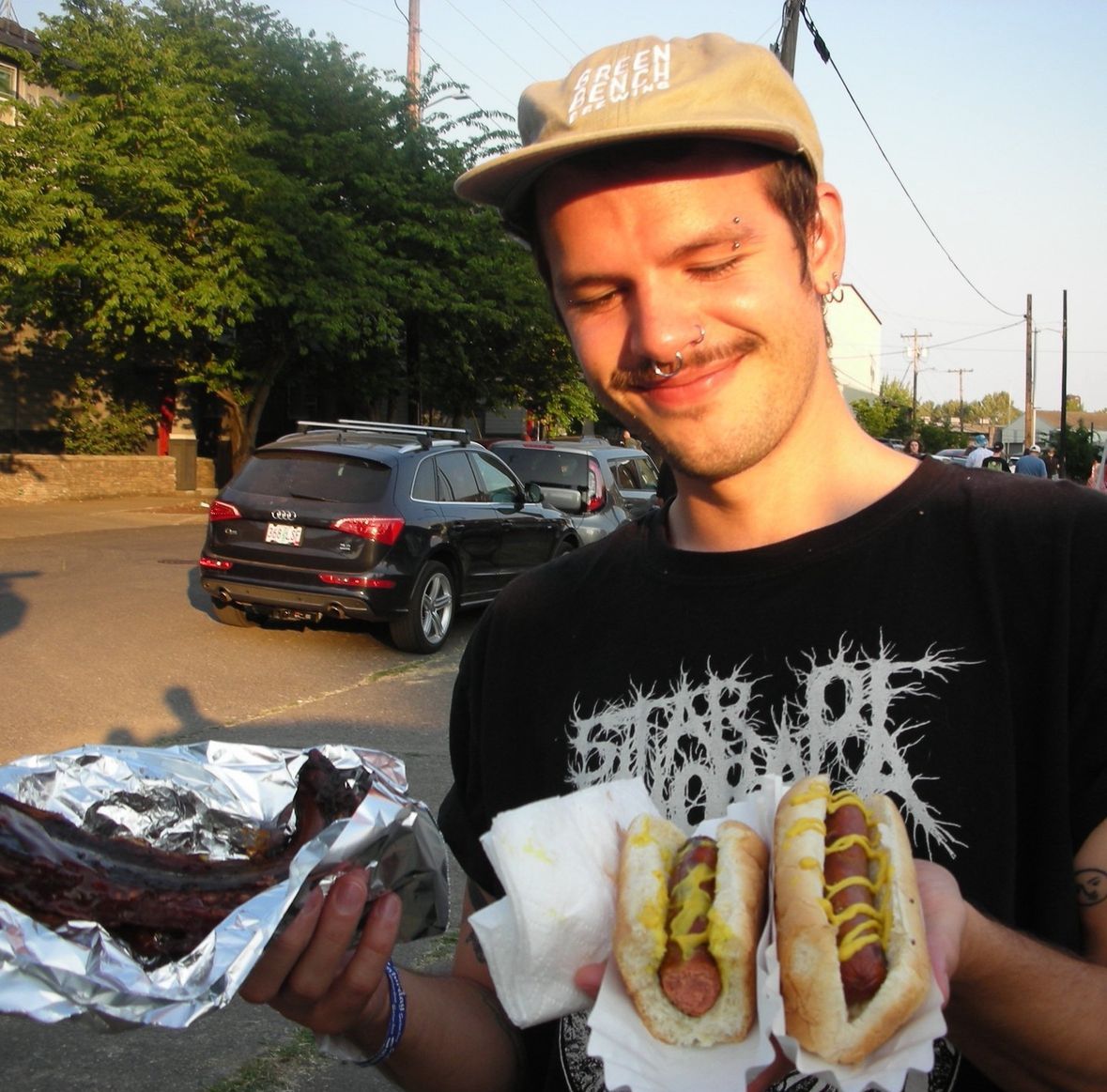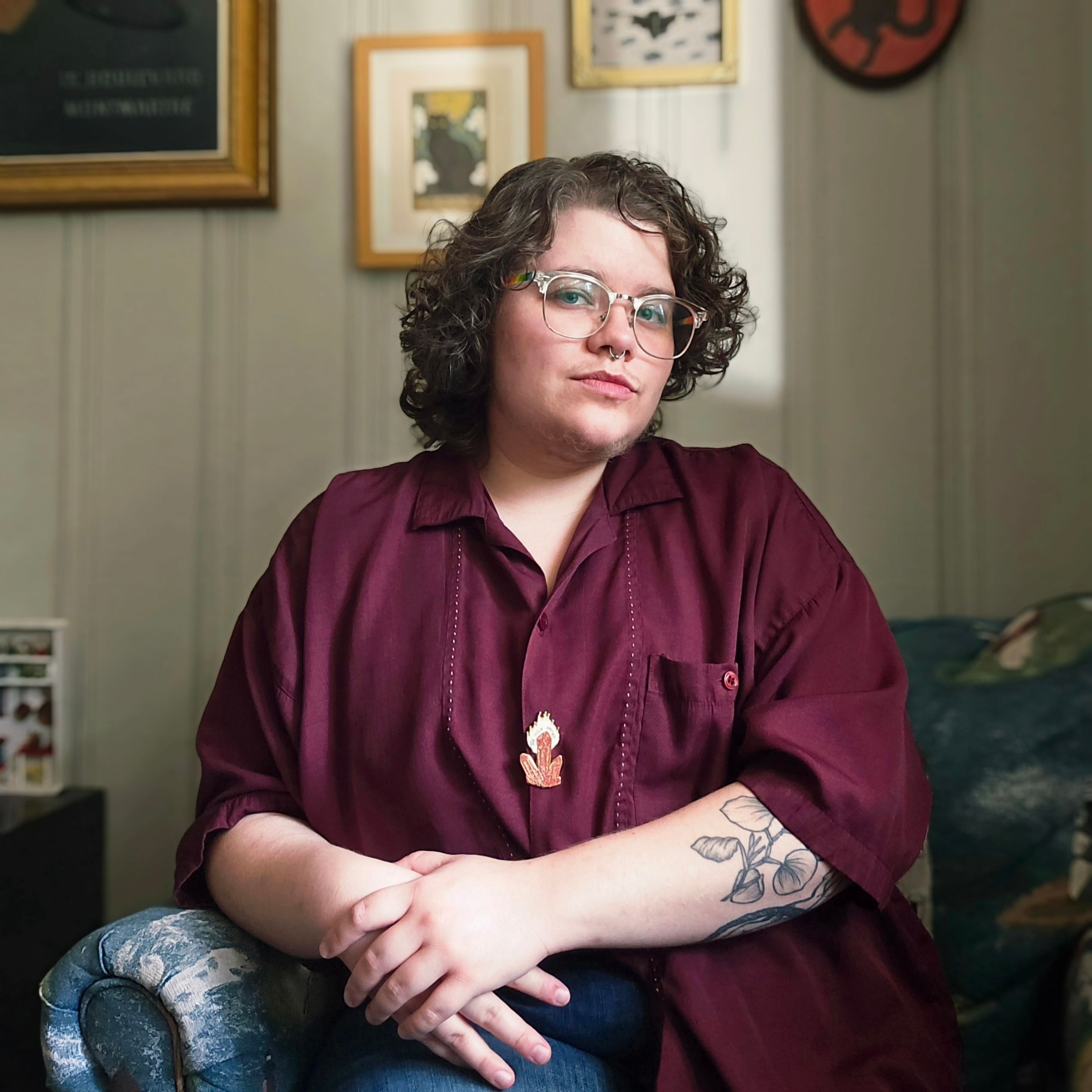Chrissy Kolaya: Tell us about the process of revising and then publishing this book.
Allison Wyss: A thing I learned in revising the book that I perhaps hadn't considered previously is how I am always revising toward something and what I revised toward once I was working on a collection changed from what I revised toward when I envisioned a story standing on its own in a literary journal. Every story was first written toward standing alone, but then I needed to revise toward them speaking to each other and making a whole. I was lucky to have a great editor who helped me understand how to make that happen.
And publication has been great! I know many writers who quietly admit that they are not happy, even if they have to be positive when they're speaking publicly. And it seems to me that the writers who are unhappy after their books are published are that way because they are looking for external validation—reviews, and lists, and sales numbers, and such. And you can do things to make those validations more likely, but you can't guarantee any of it. However, if you find your joy in loving the book itself—in loving that it is now a physical object (and maybe a metaphysical object) and it's legitimately beautiful and your best, proudest effort at writing that book—and especially if you are confident that it says what you want it to say—that's where the real joy is. Whenever I find myself wishing for, like, acclaim or something, I just go pick up a physical copy of the book and hold it and flip through it and I don't need the acclaim anymore. (But also, I don't blame anyone for caring about acclaim—it's unfair but it does affect your future and the opportunity to publish more books. It's just not a reliable source of joy.)Though the other thing is that if I do get any snippet of external validation, I hold it so tight and I savor it as long as possible. Because I know those moments are necessarily rare.
CK: What parts of the book were most difficult for you, and what kept you going through those difficulties?
AW: Every time I start a thing, it's looking into the void, because I don't know yet if it will be any good or if I'll even want to work on it the next time I sit down to write. And I know that even if I finish it, there's a possibility that no else will ever want to read it. I recognized a long time ago that while I always hope I'm writing for other people, there are no guarantees of that.
I get through that by trying to write what I think is fun.
So I start with an idea that fascinates me, and I just play. I enjoy myself scooting the characters around in different ways. I make mysteries for myself to marvel at. I poof in magic and get really gross with physical bodies, which is so much fun. And if I ever get bored, I mix it up with something else that amuses me. And eventually I reach a point where I'm so excited about what I've started, that I really want other people to see it too. That's where it gets really hard. That's when I'm pulling out my hair trying to figure out what it all means. Because I do start with something to say, but what the story means often shifts over time and through revision—it gets stranger and usually darker and wiser. And it's agonizing to figure out what meaning has accumulated and if that's really what I want my story to say. Once I figure that out—what it means, or what it is I'm trying to do with the story, there's still a lot of work to bring the story to that level where it does the thing and has something like meaning. But once I know where it's going, it's really satisfying work to bring it there. Still hard, but also fun.
CK: What can you share about the process of building this book from stand-alone stories to a collection—of deciding which pieces belonged in it, where they belonged, and why. Were there models you had in mind or used for inspiration?
AW: I thought a lot about the reader's journey and whether I wanted to bash a reader repeatedly with difficult and depressing stories or give them breaks. I thought about what mood one story sets up and if the next one should go deeper into that feeling or take a sharp turn.
Another aspect I gave a lot of consideration to is how to make certain elements mist from one story to another. Magic and body horror are both really important in the book, even though not every story contains them explicitly. My idea, then, is that if I use an early story to teach you to see bodies as sacks of blood and meat, maybe you'll keep seeing them that way in the next story, even if it's not as explicitly gory. And maybe if I teach you that magic exists in a fairy tale, you'll keep believing in that magic as you read a realistic story. I hoped to order the stories so that both the magic and the body horror exist in some level, in all of them.
And then, there are also stories that just seem to talk to each other. For example, it made sense to have the story with the lost name near the beginning and the story in which a name is revealed toward the end. That's maybe my tiny subtext of hope, that we move toward discovery instead of toward loss. And things like, ok, I have a story that literally ends with a door opening to another dimension—well, it becomes really important what story follows that! And then another maybe weird thing I had a lot of fun with was the final story and throwing in details from the previous ones, just as a (hopefully subtle) callback to other stories. I wanted to make Snow's rising up in that Frankenstein body into a sort of triumphant resurrection for all of them.
CK: What can you tell us about the choice of the book's title and the cover image?
AW: For both, I wanted something beautiful and grotesque at the same time.
I really agonized about the title. I think I'm horrible at titles. And I harassed everyone in my life with lists of (mostly bad) ideas I had for a title. Finally, a good friend who is also a writer asked me what it was I worried people wouldn't understand about my book. That was easy for me to answer: My stories are about people striving to claim their own bodies and sometimes they do that in really brutal ways. I was worried my stories might be read as if I was somehow judging them for that. But I think what they do is glorious. I think they are fighting the good fight. Once I considered my title in that light, it became easier to choose one.
And then the cover came next. I kept poring through old and beautiful anatomical illustrations, wanting something like that. But my editor suggested I look at the work of the artist, Korey Rowswell, and I just loved all of it, but this one in particular. I suppose it is more beautiful than I originally thought I wanted, but I can also imagine it as a wound or as viscera, which is perfect. I really love it.
CK: This collection is a mix of both flash and traditional-length stories. I'm interested in hearing your thoughts about flash as a form for your work.
AW: I love flash and I turn to the form frequently as a palate cleanser between other work. Also, because it's a great outlet for the extremely weird.
Structurally, you can often do stranger things with flash because a brain can hold onto the whole story at once. Longer stories need to use more familiar supports so the reader can hold all the pieces together. Need is too strong a word, but they are more difficult without them. And it's always a balance for me of how weird can I go and still keep the stories accessible and readable to different brain types and also different levels of adventurousness.
But I also just think that varying story length makes the journey through the book more interesting. You get walloped with a long, depressing trudge that's a lot of work for the reader—maybe next you would like something quicker and faster and kind of refreshing, even if it's also horrifying.
CK: I'm interested in your thoughts on what you think is the ideal way for readers to encounter flash. When discussing Kim Magowan's excellent collection Undoing in my grad fiction workshop last year, we became interested, as a class, in the ways our responses to the book as a whole and to the individual pieces in it seemed to differ depending on whether we read the pieces individually with some time in between each one, or whether we read in longer chunks of several stories at once, something closer to the way we might read several chapters of a novel in one sitting.
AW: This is a really great question. I even think about this when I read a novel. I know that the arbitrary moment I put a book down significantly impacts my reading experience. It makes time happen inside the story and it weights the events differently. And yet I have to take breaks with longer works. (I wish I didn't, but, life! Work! Family! Hunger! Bodily functions!) And I know that's one reason novels give you chapter breaks, as suggested places to rest. But of course, a reader doesn't always accept that guidance. With flash, the writer has a bit more power to make a reader stop at a certain point and then sit in whatever place you've dumped them.
And here's the thing, when you invite your reader to take a break—because the chapter ends or because the flash is complete, or maybe with just a space break in a longer short story—you risk losing the reader. You just do. But you also invite them to linger in that moment of the story, deepening their experience of it in a profound way. So, if/when they do come back to read the next thing, it is richer for the reflection that happened in the break (even if it's subconscious reflection as they moved on to their work/family/hunger/bodily function).
I was absolutely purposeful in positioning my flash. I put the three worm stories together because I want them to accumulate meaning. And I put the other flash pieces far away from each other because I wanted them to be read as stand-alone pieces. And I figure you might not take a break after a piece of flash if there's another short one coming. But if you flip ahead and see the next one is longer, then you're more likely to.
CK: I love thinking about this section of "The Seamstress and the Spider" as a metaphor for the challenges and experience of writing and revising: "After sewing for a very long time, she laid the shirt flat. Then she tore out a seam and realigned the pieces. As the sun emerged between the trees, she tore out the same seam again and again, attempting to rework the final sleeve. No matter how many times she pulled the stitches and started over, the sleeve simply would not sit." Were you consciously thinking about that connection as you wrote this section?
AW: Sewing has long seemed like a great metaphor for writing. And I write about sewing a lot!
Sewing feels so much like my process for writing and revising. When I write, I first build small bits of story, scenes and passages, and then I piece them together later, often flipping them this way and that, testing for the best fit. Finally, I stitch them together and iron them smooth. It feels like a perfect metaphor. I also like that it's a metaphor for creation that includes cutting and trimming. It's not just making, but destroying.
And I love that the act of sewing is quite bodily. It requires big motions in draping and close attention in stitching. I want to acknowledge the way my body is used in writing—it's not just brain but hands and fingers and legs when I pace, and feeling the motions (and emotions) of the characters in order to describe them.
And then it's clothing that is being sewn (at least in my stories). I think clothes become a physical part of our bodies, a way that human beings build our bodies and identities and gender and just everything. My book is about building your own body. Sewing is very much about that too. (And, you know, it also happens literally in some of my stories.)
I keep thinking of your Any Anxious Body and that lovely dress that looks embodied even as it is empty, probably on a dress form. And dress forms are uncanny and wonderful.
CK: I love the way you work and experiment with footnotes in two of the pieces in the collection: "Only Real Art Lasts Forever" and "Final Journal Entry of Dr. Francis Longfellow Hendrix, Lead Scientist at Laboratory 78 Edited by A. L. White" (a title, which, by the way, I love!). What were some of the models, inspirations, and goals for the way you used these footnotes, and—in the second story—the editor's notes?
AW: I love first-person narrators and the way we get wrapped up in this claustrophobic and particular sense of their world. But I also always want to hint at a bigger world than one narrator can know. Footnotes are one way to poke holes in the narrator's version of events, to suggest that another voice might see things differently and to invite the reader to question the voice—to question both voices, to question all voices! If there is such a thing as the truth, we can't get there as individuals but only collectively and in conversation with each other.
And it's not just the footnotes and editor's notes. I was often trying to do something similar with things like subheadings and day planner notes and emails that puncture the text. I'm always looking for ways to poke at a story with elements that suggest another voice or a bigger world.
CK: In "Only Real Art Lasts Forever" the narrator observes "I can tell a few things about the artist from the work. Right-handed, that's easy. And older, I think, than Dolores or Poncho or me. Also, there's a firmness to the lines, a slant that defies what the bird is, that complicates it. An artist puts so much of themself into a tattoo" (38). What do you think readers can tell about you from your work?
AW: I don't know! And I feel the urge to approach the question from the backdoor. I don't think people who know me casually, maybe as another mom at pickup or from the neighborhood are really prepared for what I write about when they read my book. In fact, some of those folks no longer make eye contact with me. (Is that common? It's my first book! I don't know if that's a common thing!)
But I don't think my good friends are surprised.
CK: In "The Vortex," you make the somewhat unusual choice to give one of the characters your first name: Allison. What can you tell us about this choice and the effect you were going for?
AW: I think I did it for myself more than for the reader. I discovered that it gave me a strange and awkward relationship to the character. It made me feel a certain way about her—it made me want to hold her at arm's length, somehow. And I was interested in that. It made me squirm. And I like to squirm as I write stories. I like to make a reader squirm too. But then it was way too uncomfortable for me to sustain for a longer story. And it's also a bit of a joke. It’s a way to say of course I'm in this book, but not in the way you think.
CK: Veins and worms are present in abundance throughout the collection. What interests you about these recurring images?
AW: Those three flash pieces about veins turning into worms are actually the only stories in the book that I think of as creative nonfiction.
This is maybe more personal than I should go, but it's also very important to what my book is about.
Pregnancy destroyed the veins in my legs, and so after a series of (terrifying!) blood clots, I decided to have the worst of the veins removed. And let me tell you about this experience. They got me really high on Xanax and then I just watched as they threaded lasers through my veins to burn out the big ones. Then they went back for the rest of them with what looked like a crochet hook. And what they pulled out looked like earthworms.
So, I wrote the stories to make sense of that experience. I wanted to pin it down so I could look at it from different angles. I wanted to see what else it could mean. And I think those stories are about the violence of living in a human body, in particular the violence of pregnancy, childbirth, and mothering. All of the stories in this book are about that violence.
CK: Some of my favorite moments from the book:
- p. 15: "Between crinkled and smooth, there's a lot of ugly."
- p. 74: "The fish dart for it, attack it at angles, grazing the sharp part, missing the barb. The angle is luck that has turned into habit that has turned into longevity."
- p. 88: "One of the ways to keep her from asking annoying questions was to ask her annoying questions."
- p. 111: "The nature of friendship changed world to world. We were like sisters in this one, not lovers or best friends or arbitrarily paired research associates...We talked about science and discovery and if this life were the one, the keeper."
- p. 125-126: "She powders the glow out of her face, then colors a different pink to it."
- p. 128: "I used to eat supper sometimes with his family. I remember watching his dad eat. He was so tired you could feel it in the stillness around him...He shut down every muscle but in the one arm for lifting his fork and his jaw for chewing. Even his eyelids would droop."
- p. 163: "Curtainless windows are like comic book panels."
- And finally, from the Acknowledgements page: "It's dangerous to let people know how much they mean to you. It might scare them away. But I will be brave."
Is there anything you can tell us about finding your way to any of these bits of wisdom and insight?
AW: I love this list because some of them do feel like wisdom to me and some of them feel like weird throwaway lines that I hadn't considered as particularly insightful before you dug them up. But I believe strongly that you get to take credit for all of it, whether carefully planned by your conscious brain, or sneakily planted without your awareness by your subconscious. It's all your brain after all, and your subconscious can only build wisdom from what you feed it. (I also think you have to take responsibility for anything harmful your subconscious throws in.)
And I feed my brain by reading and observing the world and having experiences. I mean, we all do! But it's somewhat rare for writers to credit living their ordinary (or exciting, for some–not me!) lives as writing time. But I think it is.
I feed my brain through experiences, and then I let ideas twist into something new through thinking about them. Everything comes from time spent thinking and daydreaming. Many years ago, I listened to podcasts (many years ago, I had more time), but I've cut things like that out of my life. Because I need to keep my brain free for its own weirdness and (at least some of the time) fixating and obsessing on strange things. I do this while I walk or take public transportation or drive. I do it when I cook and fold laundry. Any task that lets my mind wander is when I'm thinking about things that might turn into stories.
CK: What are you working on next?
AW: I've got a novel that is so close but also might never be finished. But what I keep coming back to are fairy tales. I keep writing new ones or retellings of old ones. It's a form I really love for its subversiveness (fairy tales break just about all of the workshop rules) and for the way these stories are told collectively by all of us together, each giving a new spin and refinement, but all in the same conversation.
CK: Tell us about another writer or writers you wish were being more widely read.
AW: So many. But here's what I wish and it's a problem I don't know how to solve. I wish already widely read weren't such a determining factor for readers in picking their next book.
I was talking to someone recently who is not a writer but who reads a ton. As a gift, a friend had given her a subscription of sorts that sent a different small press book every month. (Best gift ever, right?!!!) And this person loved the books, but hated the experience and said she'd never do it again. No one else she knew had read these books, and it was agony for her to read a great book but not have anyone to talk to about it. I know one answer to this is: so, get your friends to read it! But that's not always practical, not in the same way that so many people in your life might have already read whatever bestseller and are therefore just ready to discuss it casually with you on a break at work or when you drop a kid off for a playdate.
But I won't stop reading small press books—I'll just keep hounding you to read them with me. Here are a few books I've recently loved: The Anchored World by Jasmine Sawers, Unwieldy Creatures by Addie Tsai, The Hole by Hye-Young Pyun (translated by Sora Kim-Russell), Skin Thief by Suzan Palumbo, The River, The Town by Farah Ali.
(The last two are cheats—I got to read them before they release—but I am jumping for my friends to get to them).


